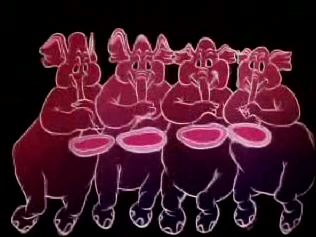When you change the colour depth of your game sprites tend to get messed up. This is because the modes actually work differently- only 32bit, for example, allows for alpha blending. As you changed your colour depth, the sprite colour depth was changed too, messing up the magic pink.
And this is why it is quite important to decide what colour depth you want before you start work on a project- changing it does force you to reimport the sprites.
Basically:
8bit is almost obsolete. It allows for 256 colours game-wide, and that is a limit few people want to put upon themselves.
16bit (high colour) is the middle ground and allows for a great range of colours. Very fine gradients will sometimes look grainy though.
32bit is "true colour" and virtually gives you every colour there is, plus the ability to use alpha transparency.
It doesn't really matter in a low-res game if you use 16 or 32bit. The first is the all-purpose, the latter the deluxe choice. The important thing is to keep in mind that you first start a project, then set screen resolution and colour depth, and then STICK to it
And this is why it is quite important to decide what colour depth you want before you start work on a project- changing it does force you to reimport the sprites.
Basically:
8bit is almost obsolete. It allows for 256 colours game-wide, and that is a limit few people want to put upon themselves.
16bit (high colour) is the middle ground and allows for a great range of colours. Very fine gradients will sometimes look grainy though.
32bit is "true colour" and virtually gives you every colour there is, plus the ability to use alpha transparency.
It doesn't really matter in a low-res game if you use 16 or 32bit. The first is the all-purpose, the latter the deluxe choice. The important thing is to keep in mind that you first start a project, then set screen resolution and colour depth, and then STICK to it









